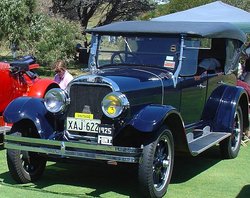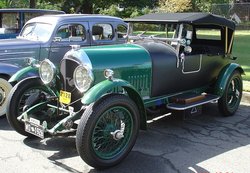Vintage car


Also See History of the automobile
A vintage car is commonly defined as a car built between the start of 1919 and the end of 1930. There is little debate about the start date of the vintage period—the end of World War I is a nicely defined marker there—but the end date is a matter of a little more debate. The British definition is strict about 1930 being the cut-off, while some American sources prefer 1925 since it is the pre-classic car period as defined by the Classic Car Club of America. Others see the classic period as overlapping the vintage period, especially since the vintage designation covers all vehicles produced in the period while the official classic definition does not, only including high-end vehicles of the period. Some consider the start of World War II to be the end date of the vintage period.
The vintage period in the automotive world was a time of transition. The car started off in 1919 as still something of a rarity, and ended up, in 1930, well on the way towards ubiquity. In fact, automobile production at the end of this period was not matched again until the 1950s. In the intervening years, most industrialised states built nationwide road systems with the result that, towards the end of the period, the ability to negotiate unpaved roads was no longer a prime consideration of automotive design.
Cars became much more practical, convenient and comfortable during this period. Car heating was introduced, as was the in-car radio. Antifreeze was introduced, allowing water-cooled cars to be used year-round. Four-wheel braking from a common foot pedal was introduced, as was the use of hydraulically actuated brakes. Power steering was also an innovation of this era. Towards the end of the vintage era, the system of octane rating of fuel was introduced, allowing comparison between fuels.
During this period, as well as the car adapting, society began to adapt to the car. In the United States, drive-in restaurants were introduced as well as suburban shopping centers and motels.
See also